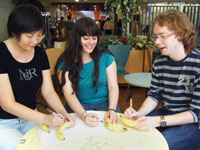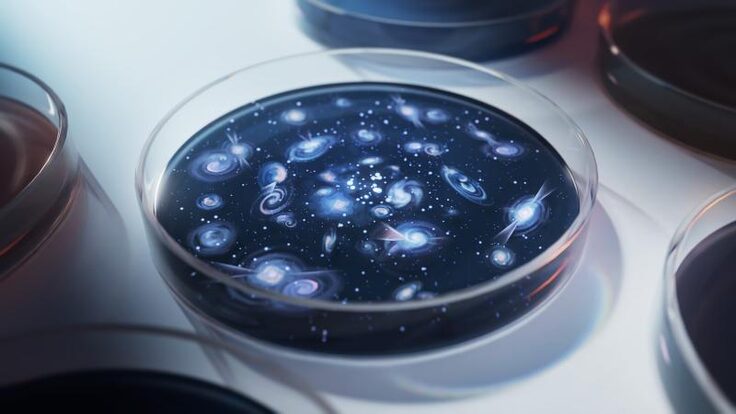Back-of-the-banana physics

Photo: Stephen Sekula
The lunchtime discussion between grad student Tingting Cao and postdoc Aidan Randle-Conde was already too far under way to stop, and a point needed to be demonstrated.
Normally, a physicist would reach for the nearest envelope and start scribbling, but over mouthfuls of paella and sips of water in the CERN cafeteria the two scientists from Southern Methodist University were nowhere near an envelope. A napkin would do, but they were already used up and crumpled.
So Randle-Conde reached for the nearest thing at hand— a banana peel.
Physicists have a reputation—self-made or otherwise—for discussing physics on any available surface. The most common phrase for a quick, short calculation is a “back-of-the-envelope calculation,” implying the nature of the writing surface: whatever you can grab.
The banana-peel trick executed by Randle-Conde was novel, even for a physicist. Still, since a great deal of work at CERN is done over food or coffee in the restaurants, this trick has inherent value.
Not a day later, I observed Rozmin Daya, another SMU graduate student conducting research at CERN, scribbling on a banana peel. It turned out to be a very strange coincidence, but it independently confirmed that the smooth, waxy outer skin of a banana peel makes an excellent writing surface.
Stephen Sekula
Click here to download the pdf version of this article.






